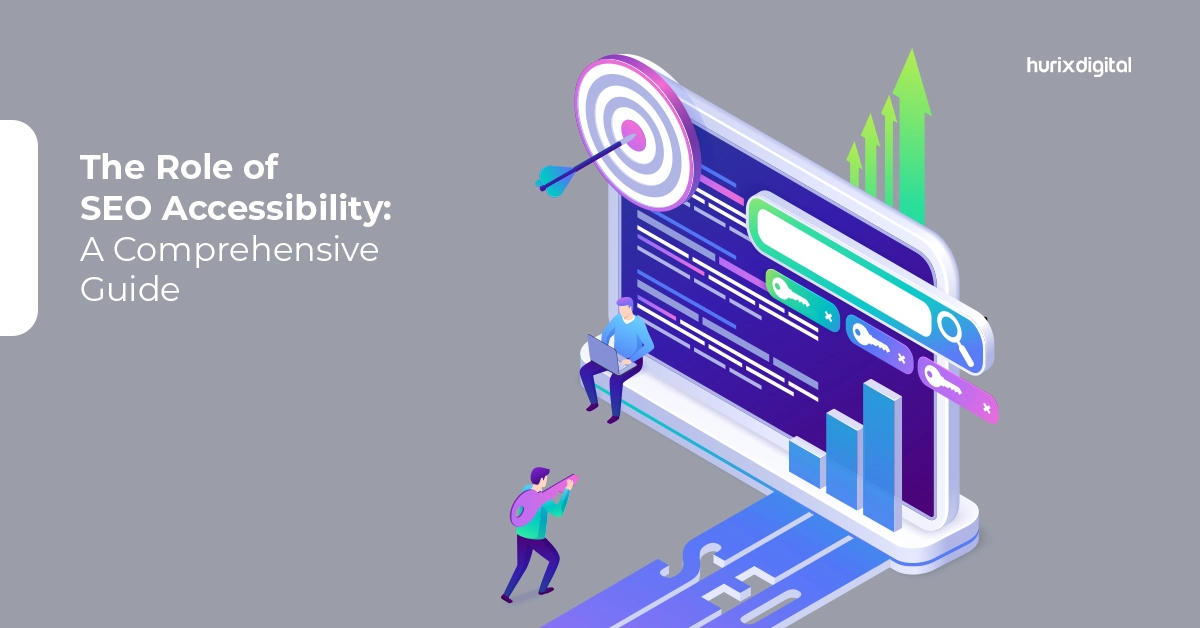
The Role of SEO Accessibility: A Comprehensive Guide
Summary
Discover essential SEO accessibility strategies for websites to boost reach, user experience, and SERP rankings, including semantic HTML and keyboard navigation.
Website accessibility is a top concern for businesses these days.
There are several reasons behind this—from customer experience enhancement to reach maximization and so on.
A poorly accessible website can also lead to serious legal implications. In 2023 alone, as many as 2,281 web accessibility lawsuits were filed! So that’s another strong reason that’s compelling businesses to prioritize this feature.
But here’s a lesser-known fact—accessibility isn’t all about the user. Yes, you heard that right! As a business, optimizing your website for accessibility can also have a positive impact on its SEO ranking.
Curious to know more? Keep scrolling to explore the ins and outs of SEO accessibility. In particular, we shall talk about accessibility’s impact on SEO, its benefits, and how you can optimize your website to yield the same. Let’s start!
Table of Contents:
- Revealing the Truth — Why SEO Accessibility Matters?
- What is the Impact of Accessibility on a Website’s SEO?
- How to Optimize a Website for SEO Accessibility?
- Wrapping Up
Revealing the Truth — Why SEO Accessibility Matters?
Although SEO accessibility is a prominent subject of discussion among tech mavens around the globe, the reason why it really matters is still unclear to many. So, we’ve listed down three of the most important ones:
1. Increased Audience Reach
Inaccessible websites might be less arduous to build. But don’t forget—1.3 billion people in the world have disabilities. If your website isn’t SEO accessible, you aren’t just stripping them of the opportunity to leverage your offerings to their benefit.
You are also drastically limiting your reach. So that’s where SEO accessibility helps first—it results in increased organic traffic by maximizing your reach.
2. Legal Compliance
As mentioned above, inaccessible websites are doomed to face legal issues sooner or later. However, if yours is SEO accessible, you don’t have to worry about impending lawsuits. SEO-accessible websites closely follow WCAG guidelines. As a result, they are legally compliant and free from regulatory implications.
3. Complimentary SEO Benefits
SEO-accessible websites also enjoy the complimentary benefits associated with SEO optimization. It includes improved ROI, higher brand credibility, increased visibility, and much more.
Also Read: Exploring the Realm of Accessibility in 2024
What is the Impact of Accessibility on a Website’s SEO?
We all know how adding the right accessibility features impacts website development and bestows boons on a website’s usability. Let’s check out how it affects your SEO efforts:
1. Improved Crawlability
Accessible websites tend to have a cleaner, methodical HTML code structure. This makes them easily crawlable. In other words, they allow search engine bots to index the site and explore its content more easily. This largely enhances your chances of appearing on the SERP results whenever a relevant search query is made by a user.
2. Better Readability
A website’s readability is one of the many things that affect its SEO rankings. So, it’s incredibly important to ace that. Accessibility enables you to do so.
Since accessible websites are optimized for design, they are highly readable. They contain appropriate font sizes, styles, color contrast levels, etc. The language used across the website is also clear and concise.
3. Enhanced User Experience
When talking of SEO, how can we not mention the role of user experience (UX) in enhancing it? As per statistics, websites with an efficient UX design tend to see a 60% increase in user retention. This means, you will witness lower bounce rates and increase your chances of sales if your website is accessible.
4. Improved Mobile Adaptability
Accessible websites are also highly compatible with mobile devices. They can seamlessly adapt to smaller screen sizes and run on different gadgets like smartphones, tablets, etc. This also majorly impacts the SEO standing of the website. No wonder why more than 64% of SEO experts swear by it!
5. Quicker Loading Speed
Finally, efficient accessibility also ensures your website loads quickly. Although it may seem like a small feat, it actually largely affects your site’s performance and boosts its SEO rankings.
How to Optimize a Website for SEO Accessibility?
Now that you know about the benefits of accessibility on a website’s SEO, let us familiarize you with five ways you can improve website accessibility to achieve them:
1. Implement Semantic HTML
Semantic HTML tags highlight the data of the content they contain, such as header, footer, h1, h2, etc. Using these tags across the website makes crawlability feasible for search engine bots, largely facilitating web accessibility.
2. Create a Responsive Design
You cannot undermine the role of UX when it comes to SEO accessibility. So, focus on creating a responsive, user-friendly design for your website. Use fluid grid layouts, images, and other multimedia elements, meta tags, etc. Also, strive to make your website design as mobile-accessible as possible.
3. Add Alt Text to Images
One of the most important yet simple accessibility practices involves adding alt text to images. This makes sure your website is fit for use by those with visual impairments. Moreover, it also enhances your website’s overall SEO by providing additional information to web crawlers.
4. Focus on Readability
Another major aspect you should work on to improve your website’s SEO accessibility is its readability. Ensure proper color contrast, use legible fonts in adequate sizes and understandable styles, maintain optimal spacing, and so on.
5. Improve Keyboard Navigation
Although a lesser-prevalent accessibility practice, you should strive to improve the keyboard navigation of your website. By this, we mean to ensure all content and parts of your website can navigated via a keyboard and mouse. This also improves SEO accessibility.
Read this Success Story: Hurix Digital Generates Alt-Text for 18,000 French eBooks for a Leading European Academic Publisher
Wrapping up
SEO accessibility is important for websites. It increases their reach, enhances their user experience, and, most importantly, augments their SERP rankings. However, most people still aren’t well-versed in making their websites accessible for SEO. If you’re one of them, too, we hope this blog served as a handbook for optimizing sites for SEO accessibility.
Having said that, we highly encourage you to check out Hurix Digital for more assistance on all things SEO accessibility. With our comprehensive Accessibility Solutions, you can easily optimize your website for the best results.
Hurry up – Get in touch today!

Associate VP of Technology, leads the design and development of innovative and accessible web solutions for publishing and eLearning clients. With over 20 years of experience in the ITES industry and a strong background in project management, automation, quality assurance, and offshore collaboration.




